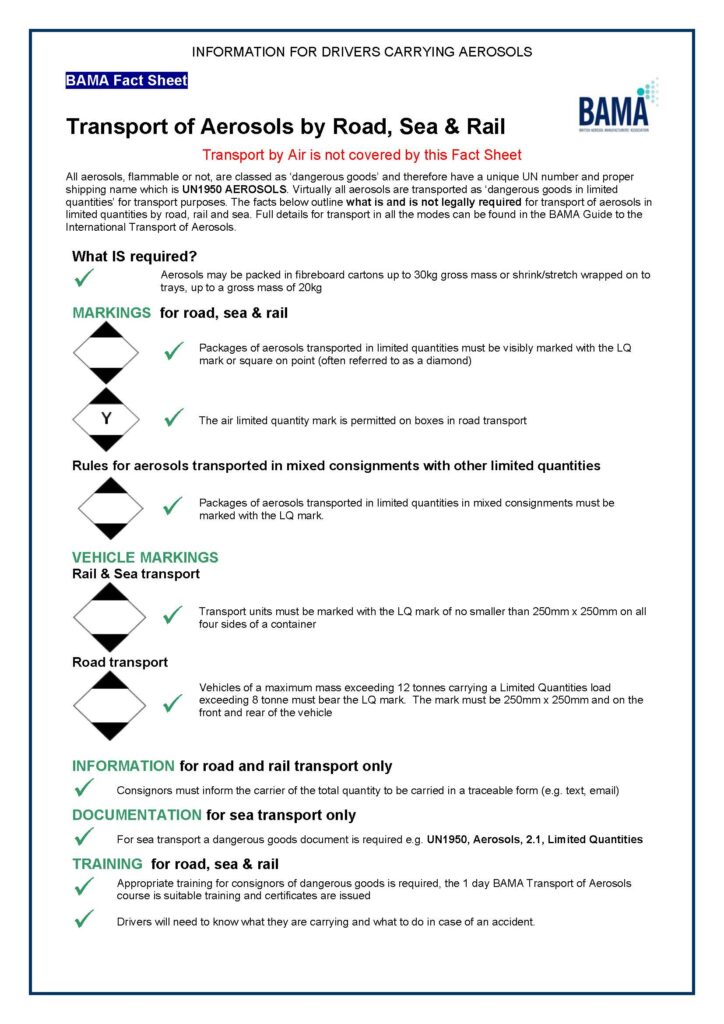
The British Aerosol Manufacturers’ Association (BAMA) has released the 16th edition (2025) of its Transport Guide for Aerosols, an updated reference that strengthens safety and legal compliance in the transport of aerosols as dangerous goods.
Why is this relevant to the industry?
It updates and clarifies the regulations for all modes of transport (road, rail, sea, air, and post), including UK-specific exceptions and requirements.
It is based on the UN Recommendations (Orange Book) and relevant adaptations: ICAO/IATA (air), IMO/IMDG (maritime), ADR/RID (road/rail), and CDG regulations (UK domestic dangerous goods transport).
The guide classifies aerosols under Class 2 (flammable, non-flammable, and toxic gases), with special emphasis on “limited quantities” — up to 1 L (120 ml for toxic aerosols) — clarifying when exemptions apply and when full compliance is required.
📦 Mode-specific controls:
- Road and rail: tunnel codes, exemptions, UK derogations
- Maritime: IMDG requirements, stowage and segregation certificates
- Air: ICAO/IATA packaging limits (Y203, Y963), with some aerosols outright prohibited
- Postal services: permitted only for cosmetic and medicinal aerosols within the UK under strict conditions
🌍 Environmental and safety aspects
- Regulates the handling and labelling of waste aerosols under ADR and IMDG.
- Emphasizes mandatory training for all actors involved, especially in air transport and companies requiring a Dangerous Goods Safety Adviser (DGSA).
- Reinforces physical safety measures in warehouses and during the transport of high-risk goods.
🧾 While the updated guide is paid, BAMA also offers a selection of free resources on its website:
👉 https://bama.co.uk/library/83
